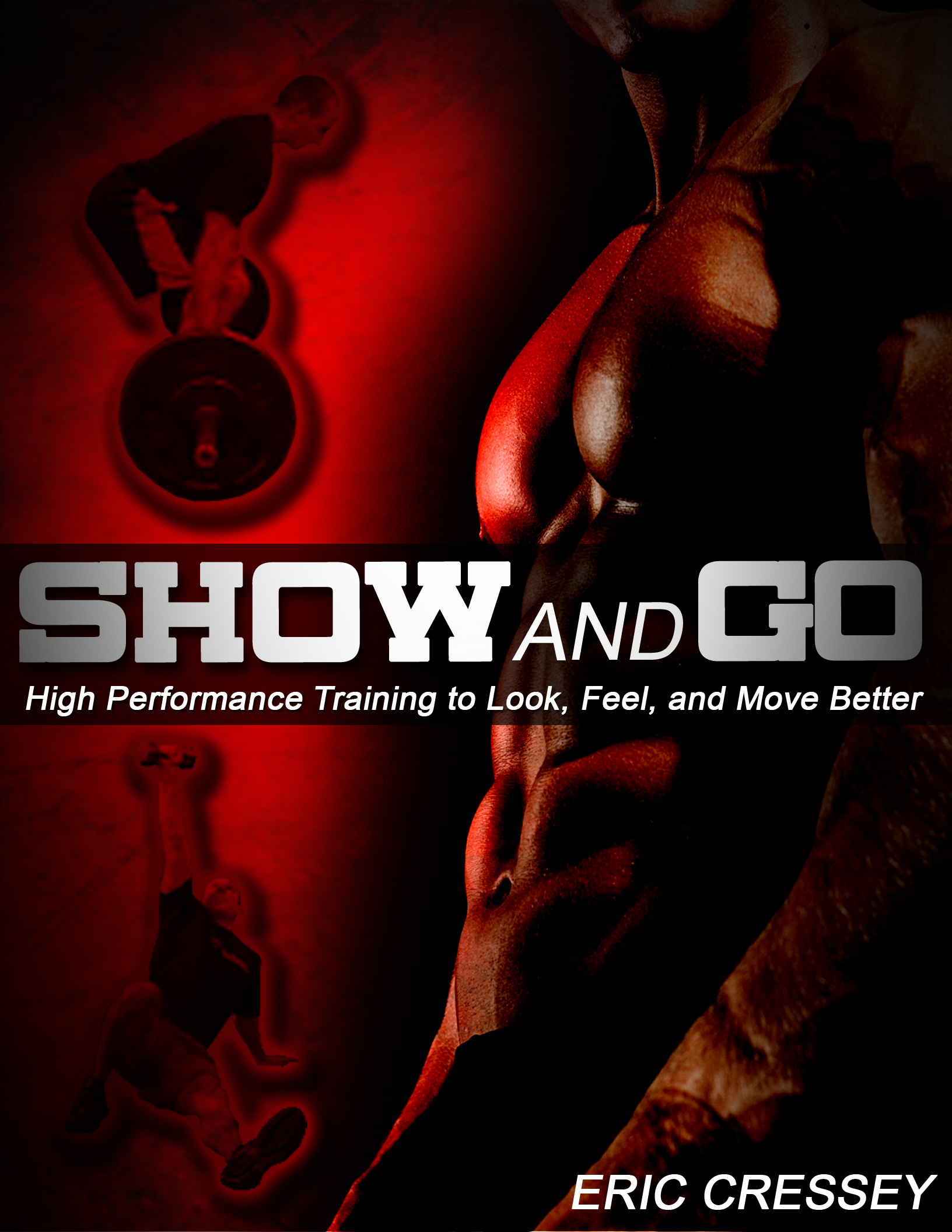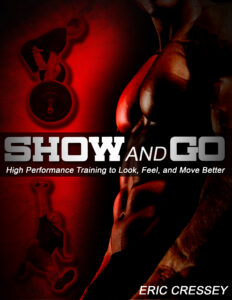
How to Train Harder and Smarter Without a Power Rack
Q: Unfortunately, my gym doesn’t have a power rack. I don’t want my strength training program to completely fall to pieces without it. Any ideas?
A: First off, in most cases, you have the option of finding a new gym – even if it just means driving a bit further and buying a day pass for the day of the week that you’d need a power rack for one or more of your strength exercises. Of course, all this additional planning can throw you for a loop if you’ve already got a busy schedule.
Luckily, this is something we addressed in the “Exercise Modifications” chapter of Show and Go: High Performance Training to Look, Feel, and Move Better, so there’s no need for me to reinvent the wheel!
This is a common limitation that is surprisingly easy to work around in your training. To be honest, the only components you’ll miss are squatting, barbell overhead pressing (and push presses), and barbell incline pressing (this, of course, assumes that you have a flat bench press set-up).
You might also be surprised to know that we actually have quite a few athletes who we don’t allow to squat because of functional (e.g., poor thoracic spine mobility, short hip flexors) or structural (e.g., rigid ankle anatomy, femoroacetabular impingement) mobility limitations. These athletes rely predominantly on extra deadlifting variations and plenty of extra single-leg work. My personal favorites for replacing squatting variations are barbell lunge and split-squat variations because they provide the benefits of axial loading. If you’re strong enough to clean the weight up and get it into position, you can do these for higher reps and get a good training effect.
Unfortunately, without a power rack in place, it’s tough to set up for these single-leg variations. Fortunately, you can also use variations where dumbbells are held at the sides and still get appreciable loading. Heavy sled pushes can also provide variety, if you have access to the appropriate equipment; the only downside is that you don’t get much of an eccentric stress challenge.
So, a “typical” lower body training session for someone with no power rack might include sumo deadlifts, walking dumbbell lunges, and barbell supine bridges. Even if you aren’t squatting, you’re still getting a hefty lower body challenge.
With respect to barbell overhead pressing, simply replace it with dumbbell overhead pressing, or have two training partners hand the bar up to you so that you can receive it in the “rack” position. Incline pressing can be replaced with either dumbbell pressing from this position or a flat bench press variation.
To take the guesswork out of your programming as you take your training to a new level, check out Show and Go: High Performance Training to Look, Feel, and Move Better.



